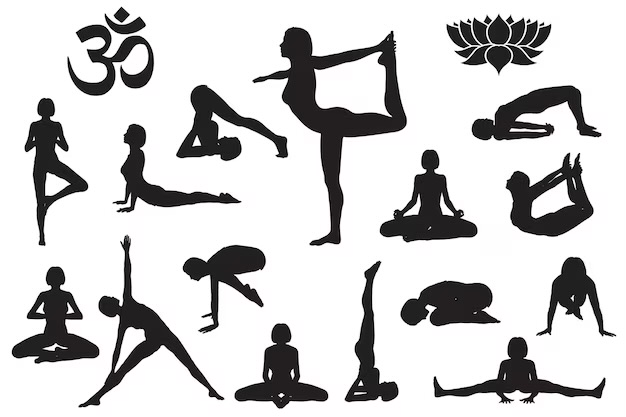Yoga, a 5,000-year-old practice, transcends mere physical exercise. Rooted in ancient philosophy and validated by modern science, it offers a holistic path to well-being. This blog delves into yoga’s rich history, evidence-based benefits, diverse styles, and philosophical depth, answering burning questions like “Who invented yoga?” along the way.

The Ancient Origins of Yoga
1. Vedic Period (1500–500 BCE): The Birth of Yogic Concepts
Yoga’s origins trace back to the Indus-Sarasvati civilization in Northern India. The Rigveda, one of the oldest sacred texts, mentions meditative practices and rituals that laid yoga’s groundwork. Early Vedic priests (Rishis) sought spiritual insight through ascetic practices, or tapas (Feuerstein, 2001).
Key Texts:
- Rigveda: Introduces hymns and mantras for transcendence.
- Upanishads (800–400 BCE): Explore atman (soul) and Brahman (universal consciousness), emphasizing meditation (Eliade, 2009).
2. Pre-Classical Era (500–200 BCE): The Rise of Ascetic Traditions
The Bhagavad Gita (circa 300 BCE) systematized yoga into three paths:
- Karma Yoga (selfless action).
- Bhakti Yoga (devotion).
- Jnana Yoga (knowledge).
3. Classical Era (200 BCE–500 CE): Patanjali’s Yoga Sutras
Sage Patanjali compiled the Yoga Sutras, defining yoga as “the cessation of mental fluctuations” (Yogas Chitta Vritti Nirodha). His Eight Limbs of Yoga (Ashtanga) include ethical guidelines, postures (asanas), and meditation (Bryant, 2009).
4. Post-Classical Era (500–1500 CE): Tantra and Hatha Yoga
Tantric philosophies emphasized the body as a tool for enlightenment. The Hatha Yoga Pradipika (15th century CE) outlined asanas, pranayama (breathwork), and mudras (gestures) to purify the body (Mallinson & Singleton, 2017).
5. Modern Yoga (19th Century–Present): Global Adaptation
Swami Vivekananda’s 1893 Chicago lecture popularized yoga in the West. Later, teachers like B.K.S. Iyengar and Pattabhi Jois modernized postural yoga (De Michelis, 2004).
Who Invented Yoga?
Yoga wasn’t “invented” by a single person. It evolved through millennia, shaped by Vedic rituals, Patanjali’s systematization, and countless practitioners.
The Science Behind Yoga: Evidence-Based Benefits
1. Mental Health Benefits
- Stress Reduction: A 2020 NIH study found yoga lowers cortisol levels by 27% (Thirthalli et al., 2020).
- Anxiety and Depression: Meta-analyses show yoga enhances serotonin production, rivaling antidepressants (Cramer et al., 2013).
2. Physical Health Benefits
- Flexibility and Strength: A 12-week study in JAMA reported 35% improved flexibility in yoga practitioners (Ross et al., 2016).
- Cardiovascular Health: Regular practice reduces blood pressure and LDL cholesterol (Chu et al., 2016).
3. Chronic Disease Management
- Diabetes: Yoga improves insulin sensitivity (Innes et al., 2016).
- Chronic Pain: NIH-funded trials highlight yoga’s efficacy for lower back pain (Sherman et al., 2011).
Exploring Different Types of Yoga
- Hatha Yoga: Slow-paced, ideal for beginners. Focuses on basic postures and breath control.
- Vinyasa: Dynamic flow linking breath to movement.
- Ashtanga: Rigorous sequence popularized by Pattabhi Jois.
- Iyengar: Uses props for alignment precision (Iyengar, 1979).
- Kundalini: Combines chanting, breathing, and postures to awaken energy.
The Philosophy of Yoga: More Than Just Poses
The Eight Limbs of Yoga (Patanjali)
- Yamas (ethical standards).
- Niyamas (self-discipline).
- Asana (postures).
- Pranayama (breath control).
- Pratyahara (sense withdrawal).
- Dharana (concentration).
- Dhyana (meditation).
- Samadhi (enlightenment).
Chakra System
Rooted in Tantra, the seven chakras (energy centers) influence physical and emotional health (Judith, 2004).
FAQs
1. Is yoga a religion?
No. While rooted in Hindu philosophy, yoga is a holistic practice adaptable to all beliefs.
2. How often should I practice?
3–5 sessions weekly yield optimal benefits (Ross et al., 2016).
3. Can yoga aid weight loss?
Yes! Vinyasa or Power Yoga burns up to 400 calories per session (Harvard Health, 2020).
4. Who invented yoga?
Yoga evolved over millennia, with key contributions from Vedic seers, Patanjali, and medieval Hatha yogis.
Conclusion
Yoga is a timeless bridge between ancient wisdom and modern science. Whether seeking mental clarity, physical vitality, or spiritual growth, its transformative power is undeniable.
Bibliography
- Bryant, E. (2009). The Yoga Sutras of Patanjali. North Point Press.
- Cramer, H., et al. (2013). Depression and Anxiety, 30(11).
- Feuerstein, G. (2001). The Yoga Tradition. Hohm Press.
- Iyengar, B.K.S. (1979). Light on Yoga. Thorsons.
- NIH Study (2020). National Center for Complementary and Integrative Health.
- Ross, A., et al. (2016). JAMA Internal Medicine.





Leave a Reply
You must be logged in to post a comment.